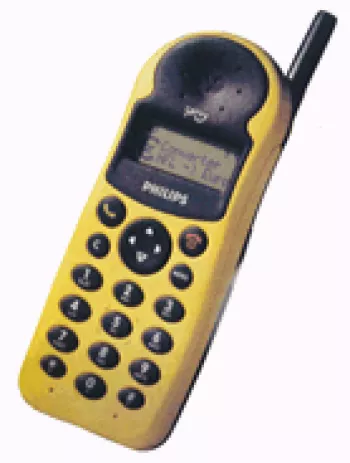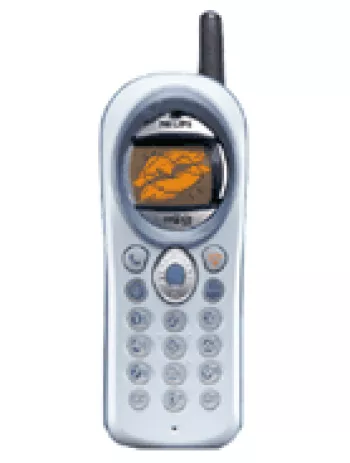
Overview of Philips X116
The Philips X116 is a feature phone that was launched in December 2010. This basic mobile device is known for its durability and practical functionality, making it a suitable choice for users who need a reliable phone for calls and simple messaging. While it lacks the advanced features of modern smartphones, it offers key attributes that cater to essential communication needs.
Design and Build Quality
The device is compact with dimensions of 108.3 x 46.7 x 13.2 mm and a weight of only 79.5 g, making it lightweight and easy to carry. The phone supports dual SIM cards (Mini-SIM), adding flexibility for users who may need to manage multiple phone numbers. Its body is designed to be sturdy enough to withstand daily usage without significant wear and tear.
Display
The Philips X116 features a 2.0-inch TFT display capable of rendering 65K colors. Despite its small size, the display is functional for the phone's basic features. It offers a resolution of 176 x 220 pixels, providing approximately 141 ppi density. While not designed for media consumption, the screen is sufficient for navigating menus and reading messages.
Camera Capabilities
Equipped with a VGA main camera, the X116 is capable of capturing basic images. However, it does not support video recording or include a selfie camera. The absence of these features highlights the device’s focus on essential communication functionalities rather than multimedia capabilities.
Network and Connectivity
The phone operates on GSM 900 / 1800 bands and includes GPRS Class 12 for mobile data. Unfortunately, it does not support EDGE networks. Connectivity options are limited to Bluetooth 2.0 with A2DP, FM radio, and miniUSB 2.0. Notably, the phone lacks WLAN capability and positioning services.
Memory and Storage
Storage on the Philips X116 is expandable via a dedicated microSDHC slot, allowing users to store personal data or additional media files. The phone includes basic memory support for phonebook entries and call records, catering adequately to the needs of its target demographic.
Battery Life
The X116 is powered by a removable Li-Ion 1050 mAh battery. This battery supports standby times of up to 850 hours and talk times of up to 8 hours, emphasizing its potential for long duration use over regular recharging. This is a valuable feature for users who prioritize battery longevity.
Audio and Sound
Audio functions include a loudspeaker, though the phone lacks a 3.5mm headphone jack. Users can listen to wireless audio through Bluetooth-enabled devices or enjoy music and radio via the FM radio feature, making it a versatile choice for on-the-go entertainment.
Messaging and Applications
The phone supports SMS, MMS, and Email, providing basic messaging solutions. It also includes a WAP 2.0 browser for lightweight web browsing. However, the device does not support Java applications, limiting third-party app usage to the pre-installed games and tools.
Miscellaneous Features
Available in a classic grey color, the Philips X116 offers a simple yet elegant design. It includes basic games for casual gameplay and supports necessary communication protocols, making it a sensible choice for those who require a functional device with essential features.
Cultural and Market Impact
In an era dominated by smartphones, the release of the Philips X116 hearkens back to a time when feature phones were prevalent. It caters to specific markets, especially in regions where affordability and durability are prioritized over high-end specifications. The phone’s simplicity makes it particularly appealing to older generations or as an entry-level device for new users.
Conclusion
The Philips X116 represents a segment of mobile technology focused on reliability and fundamental functionality. Its enduring design and performance in basic tasks underscore its relevance in specific use cases, making it a notable mention in the history of feature phones. Despite being discontinued, it continues to serve as a benchmark in understanding the evolution of mobile devices pre-smartphone era.
Key Features of Philips X116
- GSM technology with dual SIM support (Mini-SIM)
- Lightweight body with dimensions of 108.3 x 46.7 x 13.2 mm
- 2.0-inch TFT display with 65K colors
- Expandable storage with microSDHC card slot
- Integrated VGA camera
- FM radio for entertainment on the go
- Bluetooth 2.0 with A2DP support
- Removable Li-Ion 1050 mAh battery with up to 850 hours of standby time
- Supports SMS, MMS, and Email messaging
- Compact and convenient design with a weight of only 79.5 grams
Philips X116 Device Drawbacks
- EDGE is not supported, limiting faster internet connectivity options.
- No video recording capability with the VGA camera.
- The device lacks a selfie camera, which is a standard feature in modern phones.
- No 3.5mm audio jack for standard headphone compatibility.
- Absence of WLAN functionality, limiting internet access to cellular data only.
- No GPS support for location-based services.
- The device does not support Java applications, limiting software flexibility.
- The phone has been discontinued, which may result in limited support and availability of parts.

View Also
More Phones
All Rights Reserved +14266 Phones © Mobilawy 2025

























